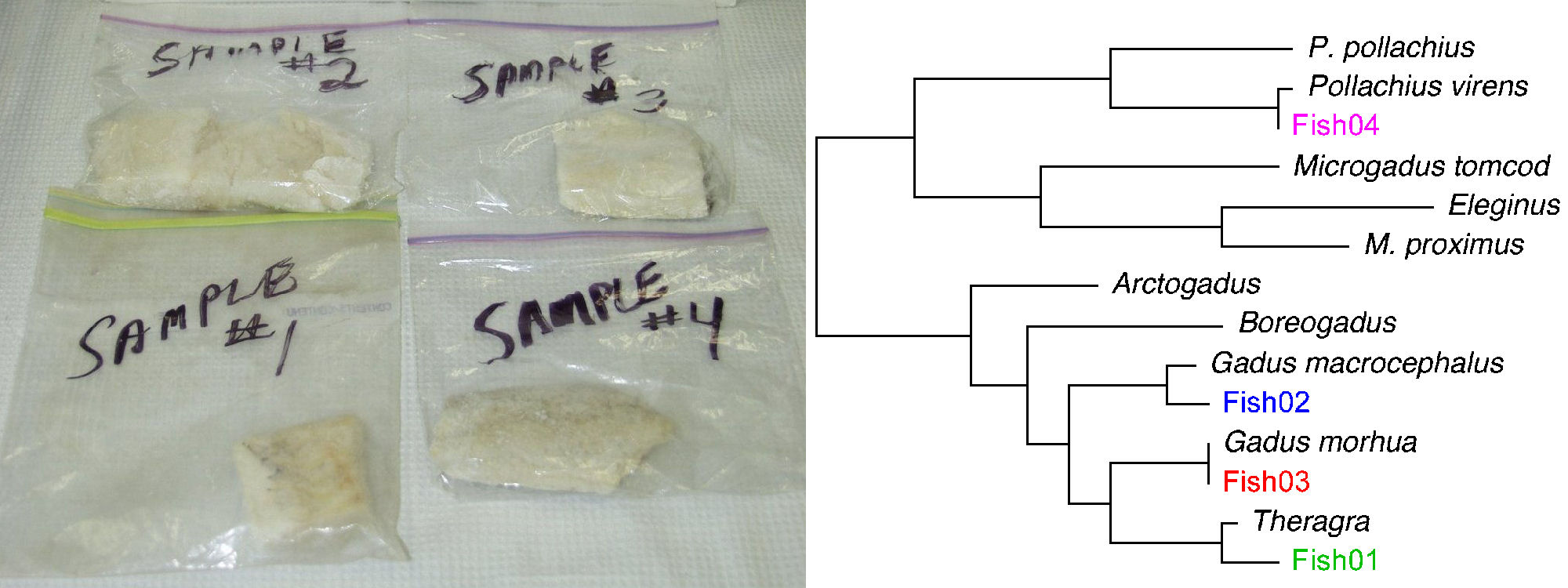
"The Case of the Falsified Fillets:"
Fisheries applications of DNA Forensics

The species identity of a fish that has been skinned, cleaned, filleted, cooked, frozen, dried, and / or salted can be difficult to determine. Questions may arise as to the origin of a commercial product, for example, whether the catch in a boat's hold has been properly reported, or whether the label on a package is accurate. In some, a product may be physically altered to pass as another, for example by bleaching of fillets. Although physical identification may be impossible once skin and scales are gone, DNA survives processing in sufficient quantities to provide a reliable test.
In the test shown
here,
the identity of four salt-cured fish fillets was questioned. DNA
from
each
was amplified, sequenced, and compared to a DNA
data base of
known
cod, pollock, and hake species. The analysis produces a "family
tree",
which shows that each fish belongs to a different commercial
species:
walleye or
Alaska pollock, Atlantic
cod,
Pacific cod, and pollock
or
saithe.